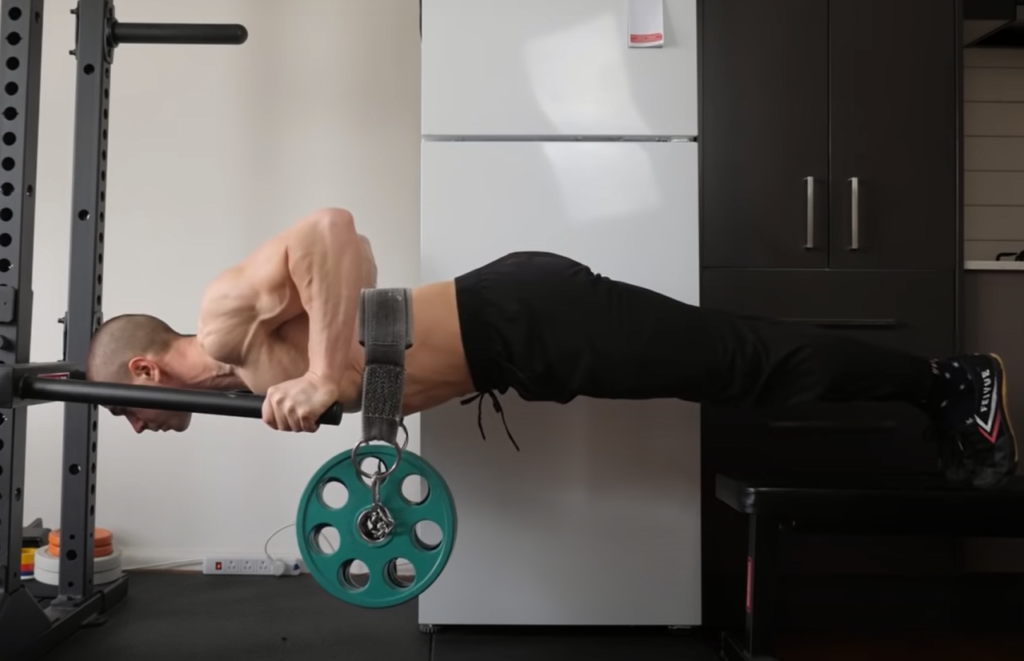We all want to stay fit and healthy, but sometimes our pursuit of fitness can lead to injuries. While some fitness injuries are impossible to avoid, there are others that are relatively easy to prevent. In this blog post, we’ll take a look at some of the most common fitness injuries and how you can avoid them.
What Fitness Injuries Are Among the Easiest to Avoid?
1. Shin Splints
Shin splints are a common overuse injury. They occur when the muscles of the lower leg become chronically overloaded and inflamed, usually due to high-impact activities like running or jumping. To avoid this injury, make sure you stretch before and after any physical activity, wear appropriate footwear, and gradually increase your intensity level instead of doing too much too soon.
2. Knee Injuries
Knee injuries are very common among athletes, particularly in contact sports such as football or soccer.
To avoid this type of injury, use proper technique while playing and take time to rest between activities to allow your body to recover properly. Additionally, strengthen the muscles around your knee by doing exercises that target your quadriceps and hamstrings. [1]
2. IT Band Complaints
The IT band is a thick band of connective tissue that runs down the outside of your thigh, from hip to knee. It stabilizes the hip joint and helps with shock absorption during movement. Tightness in this area can lead to discomfort, pain, or other issues in the hip, knee, or leg.

Common complaints associated with tightness of the IT band include:
- Pain along the outside of the thigh;
- Discomfort when stretching and bending;
- Pain or clicking noises when you move your leg;
- Difficulty walking up stairs or inclines;
- Weakness in one side of your body compared to the other;
- A feeling of instability in the knee joint;
- Uncomfortable sensations such as burning, tingling, or numbness. If you’re experiencing any of these symptoms, it may be time to look into IT band stretches and strengthening exercises;
Stretching and strengthening the muscles in this area can help relieve discomfort and improve your overall mobility.
Additionally, foam rolling is a great way to massage the IT band and release tension. It’s important to talk to your doctor before beginning any new exercise regimen. [2]
With proper care and attention for your IT band, you can get back to moving freely without pain or discomfort.
3. Wrist and Ankle Strains and Sprains
It’s important to rest the injured area, apply ice to reduce swelling, and take anti-inflammatory medications as recommended by your doctor. Physical therapy may also be necessary for more severe injuries. [3]
4. Elbow Pain
Elbow pain is a common symptom that can occur for many reasons. It is important to recognize the cause and get proper treatment to prevent further damage or complications. Causes of elbow pain may include:
- Arthritis – Arthritis, especially rheumatoid arthritis, can affect any joint in the body including the elbow causing stiffness, swelling, and pain;
- Bursitis – Bursa is a small sac filled with fluid that cushions the elbow joint from movement. When these become inflamed or irritated it can cause elbow bursitis which causes pain;
- Tennis Elbow – Tennis elbow is an inflammation of the tendons around the outside of the elbow caused by overuse or repetitive use of this area;
- Golfer’s Elbow – A golfer’s elbow is an inflammation of the tendons around the inside of the elbow caused by overuse or repetitive use of this area;
- Osteoarthritis – Osteoarthritis is a degenerative condition that affects joints throughout the body, including the elbow. It causes pain and stiffness due to cartilage damage;

Treatment for elbow pain may include rest, medications to reduce inflammation and swelling, physical therapy, corticosteroid injections, braces or splints to limit movement of the joint, and in severe cases surgery.
Knowing what is causing your elbow pain will help your doctor determine which treatment plan is right for you. [4]
Preventing Workout Injuries
Working out is an excellent way to stay healthy and in shape, but injuries can easily occur when pushing too hard or not using proper form. Taking the time to prepare your body before working out, and following a few simple guidelines during exercise can help prevent potential injuries.
Before starting any type of workout routine it is important to warm up. Warming up helps loosen muscles and increases the range of motion which will make them better able to handle the demands of exercise. Start with five minutes of light activity such as jogging or walking on a treadmill followed by dynamic stretching; stretching that involves movements, such as lunges or arm circles instead of static stretching where you hold one position for a period of time. This will help prime your body for exercise and reduce the chance of injury.
When it comes to your workouts, listen to your body. Pushing too hard or not taking enough rest days can lead to overtraining, which increases the risk of injuries. It is important to be aware of how you are feeling during exercise; if something doesn’t feel right stop immediately and take a break.

Aim for three days of strength training per week with one or two rest days in between. During these strength training sessions focus on proper form rather than lifting heavy weights quickly; this will prevent joint strain and potential injury while still providing results.
Finally, make sure to cool down after each workout session and stretch the muscles you just worked out. This will help them remain loose and will reduce the risk of injury.
By taking the time to warm up, listen to your body and cool down after each workout, you can greatly reduce the risk of potential injuries. Working out is an excellent way to stay healthy, but always make sure to take proper precautions when exercising. [5]
FAQ
What are physical activity and injury?
Physical activity and injury refer to a combination of physical activities that can lead to injuries. These activities include running, jumping, throwing, weight lifting, and other types of physical exertion that can strain the body and cause harm or damage if done improperly. Injuries sustained from physical activity range from minor aches and pains to more serious issues such as broken bones, sprains, strains, muscle tears, and joint pain. It is important that anyone engaging in physical activity understand the risks associated with it so they can take appropriate measures to prevent injury.
Proper warm-up and cool-down routines are essential for reducing the risk of injury while exercising. Additionally, using correct form when executing exercises is critical for preventing injuries. When in doubt about an exercise or technique, it is best to consult with a qualified fitness professional.
How can I reduce my risk of injury when exercising?
There are several steps you can take to reduce your risk of injury while engaging in physical activity:
- First, be sure to warm up and cool down before and after each session of exercise. This helps to prepare the body for activity, as well as reduce the risk of soreness or other issues due to overexertion;
- Additionally, ensure that you are using proper form when executing exercises. Incorrect form can lead to strain or damage of muscles or joints, so it is important that all exercises are done correctly and safely;
- Finally, be sure not to push yourself too hard during any given workout session; if something feels uncomfortable or painful, stop before you cause any damage to your body;

Listening to your body and understanding its limits is the best way to ensure that you stay safe while participating in physical activity.
What should I do if I experience an injury while exercising?
If you experience any kind of pain or discomfort during exercise, it is important to stop immediately. Continuing with a potentially dangerous exercise can lead to serious injury and long-term damage. If the pain persists after resting, it is best to consult a qualified health professional as soon as possible. They will be able to diagnose the issue and provide advice on how to proceed in order to avoid further harm. Taking preventative measures such as warming up properly, cooling down correctly and using correct form are all key in reducing the risk of injury while exercising.
If I experience an injury, how long should I take off from physical activity?
The amount of time that you need to take off from exercise depends on the severity of your injury. Generally speaking, it is best to rest completely until any pain or discomfort has subsided before gradually returning to activity. If the pain persists despite rest, it is important to consult a qualified health professional as soon as possible so they can provide advice on how best to proceed.
Every individual responds differently to injury and recovery times vary depending on age, level of fitness, and type of injury; therefore, it is essential that everyone takes into consideration their own body’s needs before pushing themselves too hard. With that in mind, if an injury does occur it is important to take the necessary time off from physical activity to ensure a full recovery.
This can help prevent further issues or the worsening of existing injuries. Additionally, listening to your body and understanding its limits is key to avoiding injury when exercising. By taking all of these steps into consideration you can reduce your risk of injury while participating in physical activities.
What sport are you least likely to get injured in?
Other low-impact activities such as swimming, walking, biking, and dancing are also known to reduce the risk of injuries because they involve less force on the body. If you’re looking for an activity that will help keep your body healthy without increasing your risk of injury, any of these activities could be a great choice!
Another activity that is often overlooked is stretching. Stretching regularly can help loosen tight muscles and keep the body flexible, reducing the risk of injury. It might not be as exciting or intense as other sports, but it’s a great way to stay active while minimizing your risk of injury! Regardless of the sport or activity you choose, always take time to warm up beforehand and cool down afterward. This will help prepare your body for movement and reduce your chances of getting injured.

What’s the healthiest sport?
The answer to this question is not so simple, as different sports offer different benefits. Generally speaking, the healthiest sport depends on your goals and preferences. Some activities emphasize endurance or strength training, while others focus on flexibility and agility. For overall physical fitness and mental well-being, some of the best options include:
- Swimming is a great full-body workout that helps to improve cardiovascular conditioning as well as muscle tone without adding excess stress to joints and bones;
- Running/jogging is another excellent choice for cardiovascular conditioning as it increases heart rate and builds endurance;
- Cycling can also yield great cardiovascular results while providing a low-impact option that can be enjoyed outdoors;
- Hiking and trail walking offer the opportunity to explore nature while putting your body through some excellent physical activity;
- Finally, yoga is a great option for both physical and mental health as it combines stretching, breathing exercises, and relaxation techniques which can help with stress relief;
Ultimately, the best sport for you varies depending on your goals and individual needs. Choose an activity that you enjoy and stick with it to see optimal results!
Useful Video: How to Avoid Stupid Injuries (TRAIN SMARTER)
Conclusion
Fitness injuries can be easily avoided with proper preparation and careful execution of exercises. Stretching before and after workouts is essential, as is listening to your body when it’s telling you something isn’t right. It’s also important to make sure you’re doing exercises correctly; if you don’t understand how to do an exercise, don’t hesitate to ask a trainer or fitness expert for help. Following these tips can go a long way toward preventing unnecessary injury while working out.
In the end, it all comes down to smart decision-making when it comes to performing fitness activities. If you take some preventive measures prior to engaging in physical activity, you are more likely to stay healthy and injury-free throughout your fitness journey. So make sure to always listen to your body, warm up and cool down properly, and don’t forget to hydrate!
By taking these precautions, you can ensure that your workouts are safe, effective, and enjoyable. Suddenly the thought of working out doesn’t seem so daunting after all!
By adhering to the tips mentioned above, you can effectively prevent many common fitness injuries. Remember: proper preparation is key when it comes to staying safe while exercising. Stretching before and after each workout session is essential for keeping muscles flexible and avoiding tears or strains; likewise, listening to your body’s signals will help identify potential problems before they become more serious issues. Additionally, make sure that exercises are performed correctly by following instructions and assistance from a qualified fitness professional.
By properly preparing for physical activity, you’ll be able to reduce the risk of injury and maximize the effectiveness of your workout sessions. With just a little extra precaution and smart decision-making, you can stay fit and healthy for years to come!
References:
- https://brainly.com/question/9175817
- https://www.numerade.com/ask/question/what-fitness-injuries-are-among-the-easiest-to-avoid-a-eye-and-mouth-injuries-b-broken-bones-c-sprains-and-strains-d-concussions-71642/
- https://www.webmd.com/fitness-exercise/guide/workout-injuries-prevention-and-treatment
- https://www.nbcnews.com/better/lifestyle/common-workout-injuries-how-prevent-them-ncna1077776
- https://www.outsideonline.com/health/training-performance/14-most-common-fitness-injuries/










Leave a Review